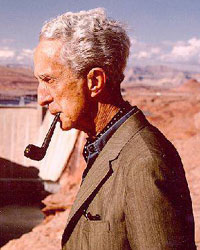 The Smithsonian American Art Museum in Washington, D.C., recently opened a new exhibit entitled “Telling Stories: Norman Rockwell from the Collections of George Lucas and Steven Spielberg.”* Rockwell’s art speaks to filmmakers Lucas and Spielberg for its ability to tell a story. Rockwell’s storytelling can also speak to lawyers seeking to use narrative in persuasive brief writing.
The Smithsonian American Art Museum in Washington, D.C., recently opened a new exhibit entitled “Telling Stories: Norman Rockwell from the Collections of George Lucas and Steven Spielberg.”* Rockwell’s art speaks to filmmakers Lucas and Spielberg for its ability to tell a story. Rockwell’s storytelling can also speak to lawyers seeking to use narrative in persuasive brief writing.
The exhibit begins with a series of photographs that Rockwell used when selecting props in Back to Civvies, a painting about a soldier returning home and trying on his old (and now too-small) civilian clothes in front of his dresser mirror. The photos show how Rockwell arranged real-life props such as a bomber model and poster, college pennant, and uniform jacket with campaign ribbons to depict the pilot’s life before leaving for World War II and after coming home.
Rockwell found details from his life, often things appeared from his work room or house in his paintings. Rockwell painted his own sofa in Let Nothing You Dismay, and he painted a ship model in The Toy Maker that can be seen hanging on the wall of his studio in a photo taken almost forty years after the painting. Those details convey precision, realism, and give his stories credibility. We can relate to these details: they present us with cultural and historical associations, and they evoke our emotions.
Even his titles convey much.
Rockwell’s Merry Christmas, Grandma . . . We Came in Our New Plymouth! speaks of an era when having a Plymouth likely signified the rise of a middle class family. This piece appeared as a Plymouth advertisement in Life magazine in December 1950.
For George Lucas, Rockwell’s work represents “little bits of culture, captured like snapshots.” Lucas and Spielberg both talked about how they respect Rockwell’s ability to put a composition together so that a viewer gets a large amount of visual information quickly and effectively. That’s what a filmmaker does, and Rockwell could have been a filmmaker, Spielberg said.
Rockwell is quoted in the exhibit as saying that “[s]tory illustrations shouldn’t give away the plot.” Rockwell liked to leave it to the viewer’s imagination to think about what is happening outside the snapshot.
Rockwell’s approach to storytelling is relevant to narrative construction in legal persuasion. Consider Professor Richard K. Sherwin’s discussion of the briefs to the United States Supreme Court in Miranda v. Arizona. Sherwin notes in his article, The Narrative Construction of Legal Reality, 18 Vt. L. Rev. 681 (1994), reprinted in 6 J. ALWD 88 (2009), that similar to Rockwell, the defense used “strategic storytelling” (113) in Miranda to develop a “strikingly dramatic narrative, replete with biographical details about its central character” (114).
Sherwin demonstrates how Miranda’s counsel strategically told his story. Like the viewer of Rockwell’s paintings, who takes an active role in viewing the scene, “the reader of Miranda’s brief finds herself cast in the active (one might say heroic) role of advancing a progressive movement within the law in the direction of basic beliefs.” (114)
The approach in the Miranda brief is analogous to Rockwell’s view that “story illustrations shouldn’t give away the plot.” Sherwin writes that the Miranda brief “invites the reader to fill in the normative content of [the] beliefs based on his or her own response to the surface tale about who Ernesto Miranda is and what happened to him while he was in police custody.” (114) The Miranda brief’s surface tale “activate[s] the brief-reader’s implicit values of fairness and equality.” (114) The Miranda brief weaves three main themes: “fate, chance, and secrecy.” (114) Sherwin argues that these themes create associations and images from which the reader gains a “framework for a proper outcome to the case.” (114)
What can brief writers do to enhance strategic storytelling? Rockwell may have recommended using a combination of a strong current of themes with specific factual details that evoke associations, emotions, and the law to engage a reader.
*My source for the information on Norman Rockwell contained in this blog is the current exhibit at the Smithsonian American Art Museum. Many thanks also go to Virginia M. Mecklenburg, senior curator, who graciously answered my questions and contributed additional details for this blog.

Wonderful post, Melissa — there is an art to briefwriting, and no better way to demonstrate that point than by cheering us on to write like Rockwell painted.
It’s intriguing but not surprising that mainstream filmmakers such as Lucas and Spielberg would be attracted to the narrative dimension of Rockwell’s paintings. In the earliest years of film production, it wasn’t necessarily clear if film would be about image, performance, or narrative. Eventually, the latter won out, and to this day the Hollywood cinema remains primarily narratival. Lucas and Spielberg “look” at Rockwell’s paintings and “hear” a story.
For many years I have toyed with the idea of using images to teach first-year Torts and Property. This post has inspired me to take up the project again.